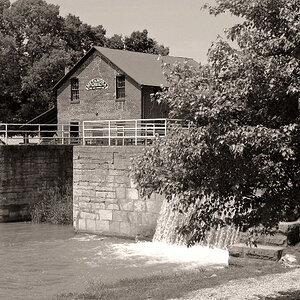skywalkerbeth
TPF Noob!
- Joined
- Nov 27, 2007
- Messages
- 101
- Reaction score
- 0
- Can others edit my Photos
- Photos NOT OK to edit
Hello everyone
I bought my second lens Friday night - 24-105 F4L IS. (what a mouthful).

Last night's photos, indoors with flash, mostly seemed to turn out well. I posted some examples here:
http://www.thephotoforum.com/forum/showthread.php?t=115541
At any rate, I'm still getting the feel for this lens and some practice photos this morning taken from the door to my deck (it's raining out) weren't quite as good (in fact to be honest, crap) so I've got some general focusing questions and hopefully can learn something. I always consider that a focusing issue has to do with me, and not the lens, unless something convinces me otherwise (not that I know enough to figure it out just yet).
1. Do you always set ONE focusing point on your camera (and if so, where - usually center, or always shot specific) or do you typically let the camera pick 3-4 spots - or self select 3-4 spots? I'm mostly talking about handheld, walking around photos. I know if you are setting up for a portrait of something you want to have the focus point on the eyes for instance.
2. What does this term "front focus" versus "back focus" mean - I have read about that in relation to folks sending it back to be calibrated. But what does it mean? And how can you tell?
3. At what point do you decide that a lens needs to be recalibrated? How would you know - just that every photo is soft? Or how would you figure out it was YOU and not the lens?
4. I've noticed this before, mostly with my little P&S Canons.. for some reason, the photos seem more in focus when the flash fires. Just from last night and today's practice, it seemed that could be one reason. Is that true, if so, why? I didn't select one point to focus last night, I merely set it on auto and let er rip. This morning I used Tv at about 1/80, at 105mm. I just wanted to take shots of the tree limbs behind my house.
5. A friend of mine told me that the reason he would not get the 24-105 is b/c the F4 means that in lower light sitches, the AF is useless - too dark, and the camera doesn't know where to focus. Is this true, if so, why? (I know, basic question). I thought when you are looking through the viewfinder, no matter what speed is selected before you depress the shutter, you still see the same thing. Maybe I just don't understand the metering/focusing tie in. I know that if it is REALLY too dark, AF won't work - but "too dark" for F4 and "too dark" for F3.5 are not insanely different - will the AF really not work for a scene that is just a teeny bit too dark?
6. For a 24-105, what are the safe slow shutter speeds to select with the IS on? I suppose at 24, using 1/40 on a normal camera is ok, so what does the IS translate that to? and for 105, I suppose 1/200 is a good speed for a normal camera, so what would IS do for that?
Thank you everyone, I am sure I will think of more later.
I bought my second lens Friday night - 24-105 F4L IS. (what a mouthful).
Last night's photos, indoors with flash, mostly seemed to turn out well. I posted some examples here:
http://www.thephotoforum.com/forum/showthread.php?t=115541
At any rate, I'm still getting the feel for this lens and some practice photos this morning taken from the door to my deck (it's raining out) weren't quite as good (in fact to be honest, crap) so I've got some general focusing questions and hopefully can learn something. I always consider that a focusing issue has to do with me, and not the lens, unless something convinces me otherwise (not that I know enough to figure it out just yet).
1. Do you always set ONE focusing point on your camera (and if so, where - usually center, or always shot specific) or do you typically let the camera pick 3-4 spots - or self select 3-4 spots? I'm mostly talking about handheld, walking around photos. I know if you are setting up for a portrait of something you want to have the focus point on the eyes for instance.
2. What does this term "front focus" versus "back focus" mean - I have read about that in relation to folks sending it back to be calibrated. But what does it mean? And how can you tell?
3. At what point do you decide that a lens needs to be recalibrated? How would you know - just that every photo is soft? Or how would you figure out it was YOU and not the lens?
4. I've noticed this before, mostly with my little P&S Canons.. for some reason, the photos seem more in focus when the flash fires. Just from last night and today's practice, it seemed that could be one reason. Is that true, if so, why? I didn't select one point to focus last night, I merely set it on auto and let er rip. This morning I used Tv at about 1/80, at 105mm. I just wanted to take shots of the tree limbs behind my house.
5. A friend of mine told me that the reason he would not get the 24-105 is b/c the F4 means that in lower light sitches, the AF is useless - too dark, and the camera doesn't know where to focus. Is this true, if so, why? (I know, basic question). I thought when you are looking through the viewfinder, no matter what speed is selected before you depress the shutter, you still see the same thing. Maybe I just don't understand the metering/focusing tie in. I know that if it is REALLY too dark, AF won't work - but "too dark" for F4 and "too dark" for F3.5 are not insanely different - will the AF really not work for a scene that is just a teeny bit too dark?
6. For a 24-105, what are the safe slow shutter speeds to select with the IS on? I suppose at 24, using 1/40 on a normal camera is ok, so what does the IS translate that to? and for 105, I suppose 1/200 is a good speed for a normal camera, so what would IS do for that?
Thank you everyone, I am sure I will think of more later.




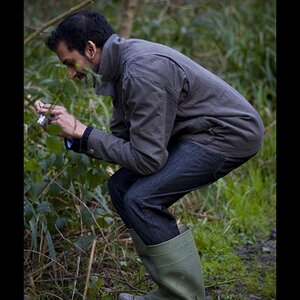
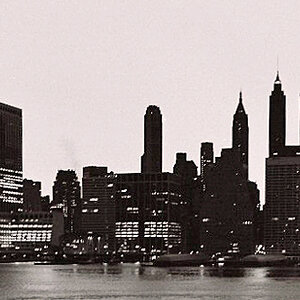
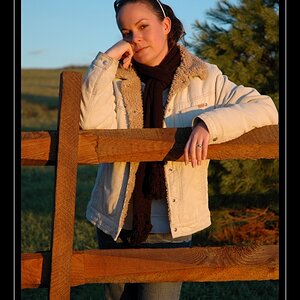
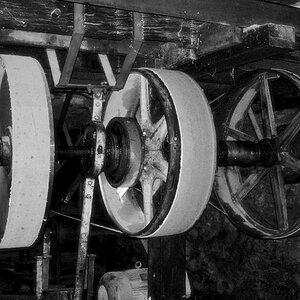
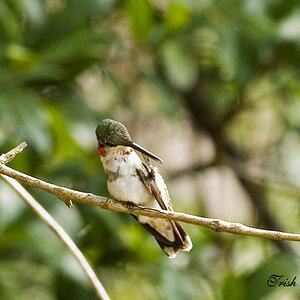


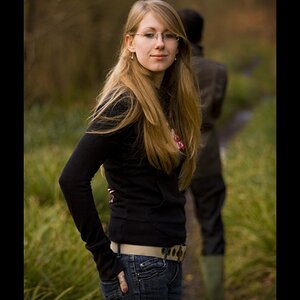
![[No title]](/data/xfmg/thumbnail/36/36652-145f66f617fee0f81baca6f8db8b4eb2.jpg?1619737673)
